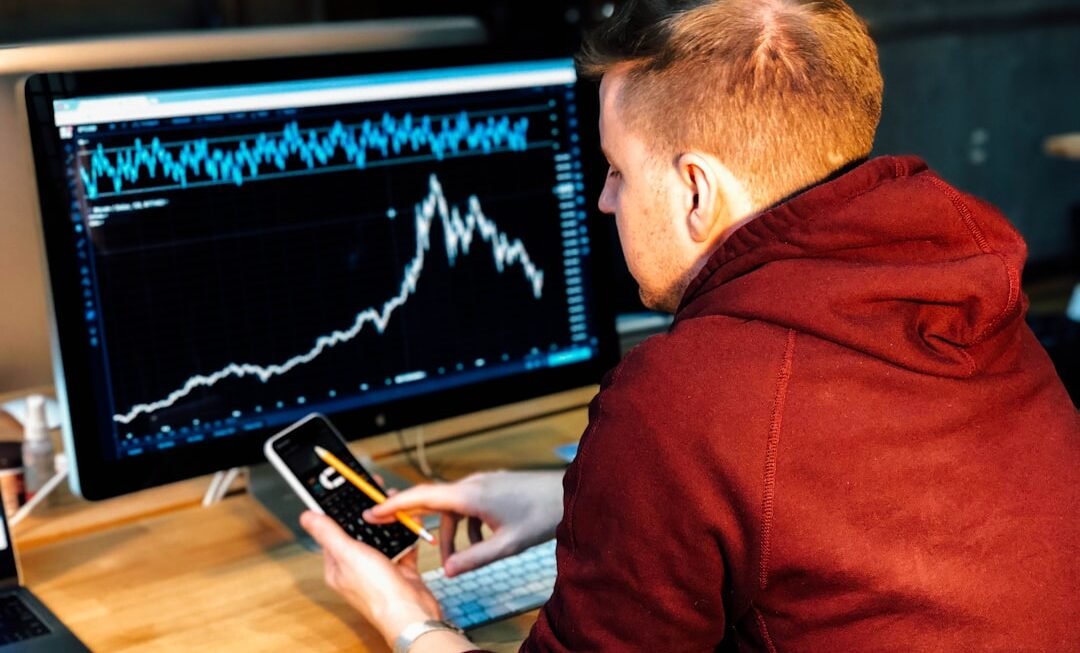Cryptocurrency trading platforms serve as the backbone of the digital asset economy, providing users with the necessary infrastructure to buy, sell, and trade various cryptocurrencies. These platforms have evolved significantly since the inception of Bitcoin in 2009, transitioning from rudimentary exchanges to sophisticated ecosystems that cater to millions of users worldwide. The rise of these platforms has democratized access to financial markets, allowing individuals to participate in trading activities that were once reserved for institutional investors and high-net-worth individuals.
The landscape of cryptocurrency trading platforms is diverse, encompassing centralized exchanges (CEXs), decentralized exchanges (DEXs), and peer-to-peer (P2P) platforms. Each type offers unique features and benefits, catering to different user preferences and trading strategies. Centralized exchanges, such as Binance and Coinbase, dominate the market due to their user-friendly interfaces and extensive liquidity.
In contrast, decentralized exchanges like Uniswap and SushiSwap prioritize user autonomy and privacy, enabling trades without the need for intermediaries. This variety allows traders to choose platforms that align with their specific needs, whether they prioritize security, ease of use, or control over their assets.
Security and Regulation in Cryptocurrency Trading
Security is a paramount concern for users engaging in cryptocurrency trading, given the history of hacks and breaches that have plagued the industry. High-profile incidents, such as the Mt. Gox collapse in 2014 and the Coincheck hack in 2018, have underscored the importance of robust security measures on trading platforms.
Most reputable exchanges implement a range of security protocols, including two-factor authentication (2FA), cold storage for funds, and regular security audits to protect user assets from potential threats. Regulation is another critical aspect of cryptocurrency trading platforms. As governments around the world grapple with how to regulate digital assets, many exchanges are taking proactive steps to comply with local laws and regulations.
This includes implementing Know Your Customer (KYC) procedures to verify user identities and adhering to Anti-Money Laundering (AML) guidelines. While regulation can enhance security and build trust among users, it can also pose challenges for platforms operating in jurisdictions with stringent requirements. The balance between fostering innovation and ensuring compliance remains a contentious issue within the cryptocurrency space.
User-Friendly Interfaces and Features
The user experience on cryptocurrency trading platforms plays a significant role in attracting and retaining users. A well-designed interface can make the difference between a novice trader feeling overwhelmed and an experienced trader efficiently executing complex strategies. Many platforms prioritize intuitive design, offering features such as customizable dashboards, easy navigation, and streamlined order execution processes.
In addition to interface design, the availability of features such as mobile applications, educational resources, and customer support can significantly enhance the user experience. Mobile apps allow traders to monitor their portfolios and execute trades on the go, while educational resources help users understand market dynamics and trading strategies.
Customer support is also crucial; responsive support teams can assist users in navigating issues that may arise during trading activities. Platforms that excel in these areas often see higher user satisfaction and retention rates.
Cryptocurrency Trading Platforms with Low Fees
Trading fees can significantly impact a trader’s profitability, making it essential for users to consider the fee structures of various platforms before committing to one. Many cryptocurrency trading platforms offer competitive fee structures to attract users, with some even providing zero-fee trading options under specific conditions. For example, exchanges like Binance offer tiered fee structures based on trading volume, allowing high-volume traders to benefit from reduced fees.
In addition to trading fees, users should also be aware of withdrawal fees, deposit fees, and other hidden costs that may affect their overall trading experience. Some platforms may charge higher fees for certain payment methods or impose limits on free withdrawals per month. By carefully evaluating these costs, traders can choose platforms that align with their financial goals while maximizing their potential returns.
Decentralized Exchanges and Their Impact on the Market
Decentralized exchanges (DEXs) have emerged as a significant force in the cryptocurrency market, challenging traditional centralized exchanges by offering users greater control over their assets. DEXs operate on blockchain technology, allowing users to trade directly with one another without the need for an intermediary. This model not only enhances privacy but also reduces the risk of hacks associated with centralized custodial services.
The impact of DEXs on the market is profound; they have introduced new trading paradigms such as automated market makers (AMMs) and liquidity pools. AMMs allow users to provide liquidity in exchange for transaction fees, creating an incentive for participation while ensuring that trades can be executed without relying on order books. This innovation has led to increased liquidity in the market and has made it easier for new tokens to gain traction without needing listings on major exchanges.
The Rise of Niche Cryptocurrency Trading Platforms
As the cryptocurrency ecosystem continues to expand, niche trading platforms have emerged to cater to specific segments of the market. These platforms often focus on particular types of assets or trading strategies that may not be adequately addressed by larger exchanges. For instance, some platforms specialize in trading non-fungible tokens (NFTs), while others may focus on decentralized finance (DeFi) projects or specific geographic regions.
Niche platforms can provide unique advantages for traders looking for specialized services or assets that are not available on mainstream exchanges. For example, a platform dedicated to NFT trading may offer advanced tools for minting, buying, and selling digital art or collectibles, attracting artists and collectors alike. By honing in on specific markets or asset classes, these platforms can foster communities of like-minded traders who share similar interests and goals.
Integration of Artificial Intelligence and Machine Learning in Trading Platforms
The integration of artificial intelligence (AI) and machine learning (ML) into cryptocurrency trading platforms is revolutionizing how traders analyze data and make decisions. These technologies enable platforms to process vast amounts of market data in real-time, identifying patterns and trends that may not be immediately apparent to human traders. For instance, AI algorithms can analyze historical price movements alongside social media sentiment to predict future price fluctuations.
Moreover, AI-driven tools can assist traders by providing personalized recommendations based on their trading history and preferences. Some platforms offer automated trading bots that utilize machine learning algorithms to execute trades on behalf of users based on predefined strategies. This level of automation not only enhances efficiency but also allows traders to capitalize on market opportunities even when they are not actively monitoring their accounts.
The Emergence of Social Trading Platforms
Social trading platforms have gained popularity as they combine elements of social media with cryptocurrency trading, allowing users to share insights, strategies, and performance metrics with one another. These platforms enable novice traders to learn from experienced investors by following their trades or copying their strategies directly. This collaborative approach fosters a sense of community among traders while democratizing access to advanced trading techniques.
Platforms like eToro have pioneered this concept by allowing users to view the performance of top traders and replicate their trades with a single click. This feature not only empowers inexperienced traders but also incentivizes successful traders by providing them with additional income through profit-sharing mechanisms. As social trading continues to grow in popularity, it is likely that more platforms will adopt similar features to enhance user engagement and retention.
Cryptocurrency Trading Platforms with Advanced Charting and Analysis Tools
For serious traders, advanced charting and analysis tools are essential for making informed decisions in a volatile market. Many cryptocurrency trading platforms offer sophisticated charting capabilities that allow users to analyze price movements using various technical indicators such as moving averages, Bollinger Bands, and Fibonacci retracements. These tools enable traders to identify potential entry and exit points based on historical price patterns.
In addition to charting tools, some platforms provide access to comprehensive market analysis resources, including news feeds, sentiment analysis, and economic calendars that track relevant events impacting the cryptocurrency market. By equipping traders with these advanced tools and resources, platforms can enhance their users’ ability to navigate complex market conditions effectively.
The Role of Cryptocurrency Trading Platforms in the Adoption of Digital Assets
Cryptocurrency trading platforms play a pivotal role in driving the adoption of digital assets among mainstream audiences. By providing accessible interfaces and educational resources, these platforms lower the barriers to entry for new users who may be unfamiliar with cryptocurrencies or blockchain technology. As more individuals engage with these platforms, they become more comfortable with digital assets as an investment class.
Furthermore, partnerships between trading platforms and traditional financial institutions are helping bridge the gap between conventional finance and the cryptocurrency ecosystem. For example, some exchanges have collaborated with banks to offer seamless fiat-to-crypto transactions or integrated cryptocurrency services into existing banking apps. These initiatives not only enhance user convenience but also contribute to broader acceptance of cryptocurrencies as legitimate financial instruments.
The Future of Cryptocurrency Trading Platforms
The future of cryptocurrency trading platforms is poised for continued evolution as technology advances and user needs change. With ongoing developments in security measures, regulatory frameworks, and innovative features such as AI integration and social trading capabilities, these platforms will likely become even more integral to the global financial landscape. As they adapt to emerging trends and challenges within the industry, cryptocurrency trading platforms will play a crucial role in shaping how individuals interact with digital assets in the years to come.
FAQs
What is a cryptocurrency trading platform?
A cryptocurrency trading platform is a digital marketplace where traders can buy, sell, and exchange cryptocurrencies. These platforms often provide tools and features for trading, such as price charts, order books, and trading pairs.
What should I look for in a cryptocurrency trading platform?
When choosing a cryptocurrency trading platform, it’s important to consider factors such as security, fees, available cryptocurrencies, user interface, customer support, and regulatory compliance. Additionally, some traders may prioritize features like margin trading, staking, or decentralized finance (DeFi) integration.
What are some popular cryptocurrency trading platforms in 2025?
As of 2025, some popular cryptocurrency trading platforms to watch include Binance, Coinbase, Kraken, Bitfinex, and Huobi. These platforms are known for their user-friendly interfaces, diverse range of cryptocurrencies, and robust security measures.
What are the risks of using cryptocurrency trading platforms?
Using cryptocurrency trading platforms comes with inherent risks, including price volatility, security vulnerabilities, regulatory uncertainty, and the potential for fraud or hacking. It’s important for traders to conduct thorough research and exercise caution when using these platforms.
How can I stay updated on the latest cryptocurrency trading platforms?
To stay updated on the latest cryptocurrency trading platforms, traders can follow industry news websites, subscribe to cryptocurrency newsletters, join online communities and forums, and follow reputable influencers and analysts in the cryptocurrency space. Additionally, conducting regular research and due diligence can help traders stay informed about new and emerging platforms.












